Please note, I am not selling anything here. All product photos, names, pricing, etc. is for informational and educational purposes only. Pricing and brands may differ at your local grocery store.
An emergency food supply is one of the most valuable preparations we can make to prepare for urgent situations when a stable food supply might not be available to the extent we have become accustomed. Times of flooding, earthquake, storms, labor strikes, and more can restrict or halt food supplies.
Why a food reserve?
I remember during the ice storm of ’98 that many people in the area where I was living were out of power and phone service for 2-3 weeks. The lines at the grocery store were excruciatingly long. I just went for bottled water because we were running low (it was before we began preparing) and it took half an hour just to find out there was no water. Food shelves were mostly cleaned out. No bread, no milk, no cereal — almost anything of nutritional value was cleaned out.
The town was devastated. It was like driving through London during the blitz. Wires were on the ground everywhere, trees were down, and hundreds of transformers had exploded. Many roads were completely blocked off, and if you were lucky enough to find a gas station with gas, you were waiting in line for half an hour or more.
We were already in the habit of shopping for groceries once a month in order to take advantage of bulk savings, then we would pick up perishables, like milk and salad greens, once a week. That meant that we had plenty of food, fortunately.
But, it could have been a lot worse … and it was worse for many other people. Many had several days without access to food, days without heat, and days with out running water.
Impending disaster?
This type of emergency could happen at anytime. Even worse, with food prices skyrocketing, supply lines collapsing, hawks beating the drums of world war, and key foods (such as baby formula and chicken) plagued with manufacturing issues and disease concerns, we could be headed into a very difficult time. It’s happened in America before, and thousands starved. It’s happened in other countries, where tens of millions have starved.
And the world now teeters on the edge of another apocalyptic crisis. Food riots have already begun in some countries, and the forecasts for world food harvest and supply this summer and fall are alarming.
But, even if you don’t believe that the Great Collapse is coming, having an emergency food supply gives you peace of mind — and options — when the inevitable crisis comes your way.
A starting point
Figuring out what to put in your emergency supply can be daunting, and in fact it can be the main reason many people don’t have an emergency reserve. They just don’t know where to start.
That’s where this article comes in. I’ve done some of the legwork and done some research on the internet to figure out what and how much to stock up on, then I pulled out examples from our local Walmart. I’m not an expert, and I urge everyone to do their own research and make their own decisions, but one thing I believe I can safely say is that if you have the example food reserve shown on this page, you will be able to go for one month without starving.
Yes, it will be a bland diet. No, it won’t be exciting. But it will give you an emergency back-up and peace of mind, at an unbelievably low price. It also gives you a starting point which you can use to build a more pleasant and nutritionally diverse emergency supply.
A basic one month supply
Below is the list of foods (also pictured above). These aren’t recommendations for specific products or a specific retailer. The picture and pricing are for the purpose of example only. You can buy any brand at any retailer, and you’ll be surprised how cheap you can get a basic one-month supply of food.
- 20 lbs Rice
- 10 lbs flour
- 2 lbs pasta
- 4 lbs beans
- 1 lb salt
- 30 oz dry potato
- 8 oz baking powder
- 48 oz vegetable oil
- 1 large can Nido
You can substitute dry milk for the Nido, but I chose Nido for this example for a couple reasons:
- It’s a whole milk product. Most dry milk powder is skim and doesn’t taste very good.
- It’s fortified with vitamins and minerals, which is important when you may not be eating the balanced diet to which you are accustomed.
You can mix-and-match the grains (rice, flour, pasta) for a balance you like. The flour, oil, salt, baking powder, and milk give you options like pancakes, biscuits, and flat breads. Rice is a good, cheap source of calories for daily meals, as is the pasta.
If you are concerned about access to water, add 5 24-packs of bottled water for drinking, per adult. Add additional water gallons for cooking and hygiene to complete your prep.
Peace of mind
I want to say again that this is a starting point. This package is designed to show us how easy and cheap a one-month food supply can be. There is a lot which can be done to balance it and embellish it, and a future article will deal with exactly that.
But, for now, this list will feed you for a month and prevent starvation. Think of the peace of mind you will have knowing that you have what you need to survive that long if things break down.
For those who are already preparing, imagine the peace of mind that you would have if all of your friends and families had just this little package of food in their home. I’ve even thought about putting packages together as birthday gifts this year.
Hungry people are vulnerable, exploitable people. This one cheap, simple step helps make sure you don’t fall into that category.
Watch the video about this:
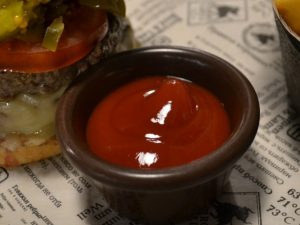
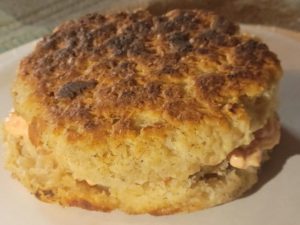
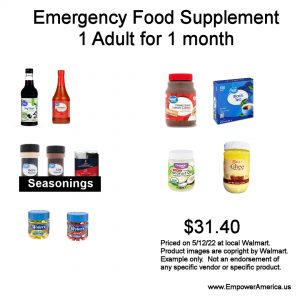
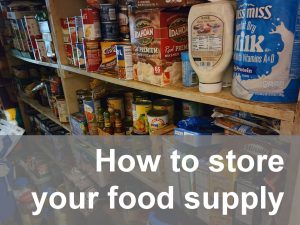
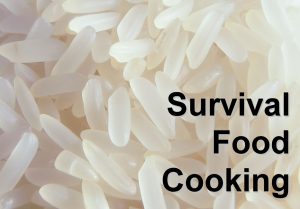
Be First to Comment